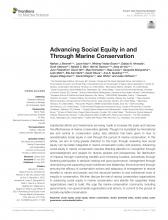Predation of sea turtle eggs by rats and crabs

BRB
Stokes, H., Esteban, N., Hays, G. C.
2023
Egg predation by invasive and native species may have severe impacts on endangered species and negatively affect species recovery. We assessed the levels of egg predation within green turtle (Chelonia mydas) clutches on the island of Diego Garcia (7.42°S, 72.45°E), Chagos Archipelago (Indian Ocean). Native coconut crabs (Birgus latro) and ghost crabs (Ocypode spp.), as well as introduced black rats (Rattus rattus), were predators of eggs, with these species entering nests via tunnels dug obliquely in the sand. Often whole eggs were removed from clutches. For example, the mean clutch size at oviposition (mean 127.8 eggs, n = 23, range = 74–176) was significantly larger than at the end of incubation (mean 110.9 hatched and unhatched eggs, n = 16, range = 9–147). In other cases, egg predation was recorded where the egg had been opened and contents were eaten in the nest. Overall, hatching success (the percentage of eggs laid leading to a hatchling emerging from the egg) was 64.9%, while 3.1% of eggs were predated within nests, 18.1% died during incubation without predation and 13.9% were removed. We reviewed evidence from 34 sites around the world identifying 36 predators that were either native (e.g., crabs, and goannas, n = 30) or invasive (e.g., rats, and pigs, n = 8). Depending on location, a predator could be identified as both native and invasive (e.g., dogs). We discuss how either nest protection and/or invasive predator eradication may be used to increase egg survival and when these approaches might be used.








